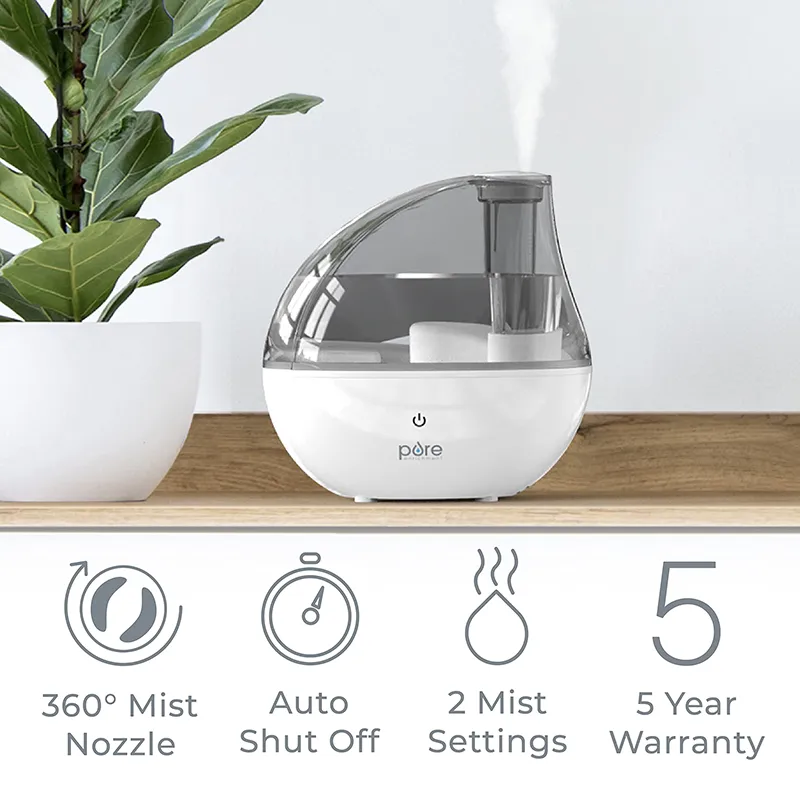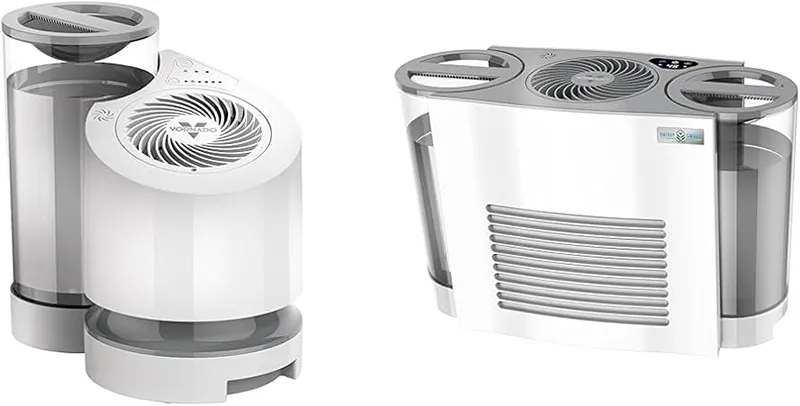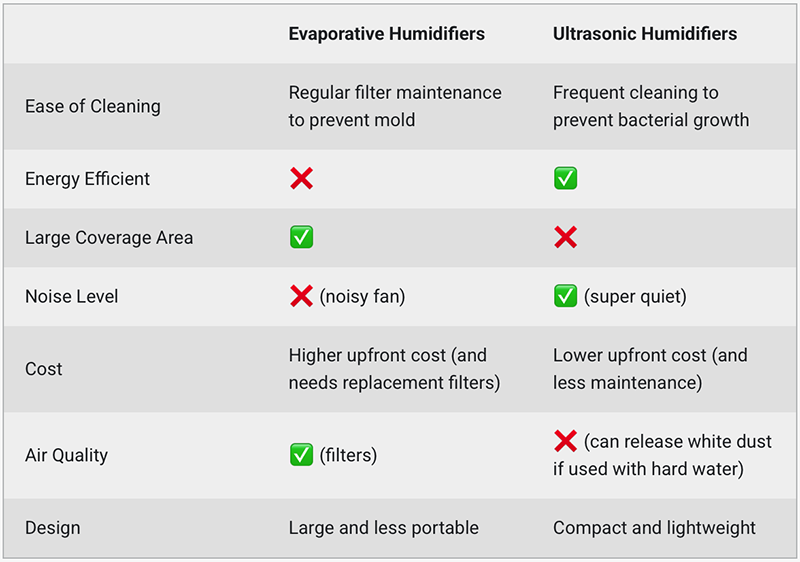Home Safety &Tech
Ultrasonic vs. Evaporative Humidifiers: Which One Is Right for You?

Humidifiers are useful devices that increase the moisture levels in a room. Many people use them to help combat dry skin, chapped lips, and alleviate congestion or cold and flu symptoms, especially in the dry winter months. While warm-mist humidifiers require hot water to produce vapor, cool-mist humidifiers are generally considered safer since they don’t involve boiling water.
Cool-mist humidifiers come in two main types: ultrasonic and evaporative. Each works differently to release water vapor into the air, increasing humidity in the room. Understanding the differences between them can help you choose the best option for your needs.
What is an Ultrasonic Humidifier?

Courtesy of Amazon
One key difference between vaporizers, warm-mist humidifiers, and ultrasonic humidifiers is the way they produce vapor. Unlike vaporizers, which boil water to create steam, ultrasonic humidifiers do not use a heating element. Instead, they utilize high-frequency sound vibrations from two ceramic plates inside the device to produce a fine mist of water droplets. These tiny droplets are then released into the room, where they evaporate and raise the room’s humidity.
What is an Evaporative Humidifier?

Courtesy of Amazon
Evaporative humidifiers, also cool-mist models, operate differently from ultrasonic units. These humidifiers rely on the natural process of evaporation to increase moisture levels. When you place a bowl of water in a room, it will gradually evaporate and increase the humidity. Evaporative humidifiers accelerate this process by using a fan and a wick filter. The fan pulls air through the wick, causing the water to evaporate into vapor, which is then blown into the room to boost humidity.
Key Differences Between Ultrasonic and Evaporative Humidifiers

Courtesy of Bobvilla
1. Mineral and Contaminant Release
Ultrasonic humidifiers can release minerals and contaminants into the air. Since they don’t have a filter, any minerals found in the water, such as calcium, magnesium, or potassium, are dispersed into the air along with the mist. This can result in white or gray dust settling on floors or furniture. The amount of dust depends on the water’s mineral content—hard water tends to produce more dust.
To minimize this, the EPA recommends using distilled water, which contains fewer minerals than tap water. This not only reduces dust but also minimizes mineral buildup inside the humidifier. Regular cleaning is essential to prevent bacteria growth.
2. Aesthetic Appeal
Ultrasonic humidifiers are often preferred for their compact, sleek designs. They tend to be smaller and more visually appealing compared to evaporative models, which can be bulkier due to the fan and filter components. Ultrasonic humidifiers also offer additional features, such as built-in clocks or LED lights, making them a stylish addition to any room.
3. Filter Maintenance
Evaporative humidifiers require regular filter maintenance. While the filter helps reduce mineral dust, it also needs to be replaced every 1 to 3 months, depending on usage. If you use the humidifier frequently, the filter may need to be changed more often. Ultrasonic humidifiers do not require filters, which can be a benefit in terms of lower ongoing maintenance costs. However, both types still need to be cleaned regularly, at least once a week, to remove mineral buildup and prevent bacteria growth. Using a mixture of white vinegar and water is an effective cleaning solution.
4. Noise Levels
Ultrasonic humidifiers are generally much quieter than evaporative humidifiers. Since ultrasonic models use high-frequency sound waves that are inaudible to humans, they operate at less than 30 decibels, making them virtually silent. This makes them ideal for bedrooms where quiet operation is important.
In contrast, evaporative humidifiers are noisier because they use a fan to speed up the evaporation process. While some models feature quieter fans, most will produce noise in the range of 28 to 45 decibels. If you don’t mind a bit of white noise, you may prefer the sound of an evaporative humidifier.
5. Cost
Evaporative humidifiers are generally more expensive than ultrasonic models, particularly larger ones. The price difference often reflects the size and capacity of the unit, as evaporative models tend to handle larger spaces. Ultrasonic humidifiers, being smaller and more compact, are typically priced lower but may not be suitable for large rooms.
Average Price
Evaporative Humidifiers: $290
Ultrasonic Humidifiers: $68
Beyond the initial purchase price, evaporative humidifiers also come with ongoing costs for filter replacements. While ultrasonic models do not require filters, evaporative models will need new filters every 1 to 3 months. Though the cost of replacement filters is relatively low, it can add up over time, making the long-term cost of an evaporative humidifier higher.
In summary, both ultrasonic and evaporative humidifiers can effectively increase the humidity in your home, but they each have distinct features and benefits. Ultrasonic humidifiers are quieter, more compact, and easier to maintain, but they can release mineral dust into the air if not used with distilled water. Evaporative humidifiers require more maintenance, especially in terms of filter replacements, but they are often better suited for larger spaces. The right choice for you will depend on your specific needs, room size, and maintenance preferences.
